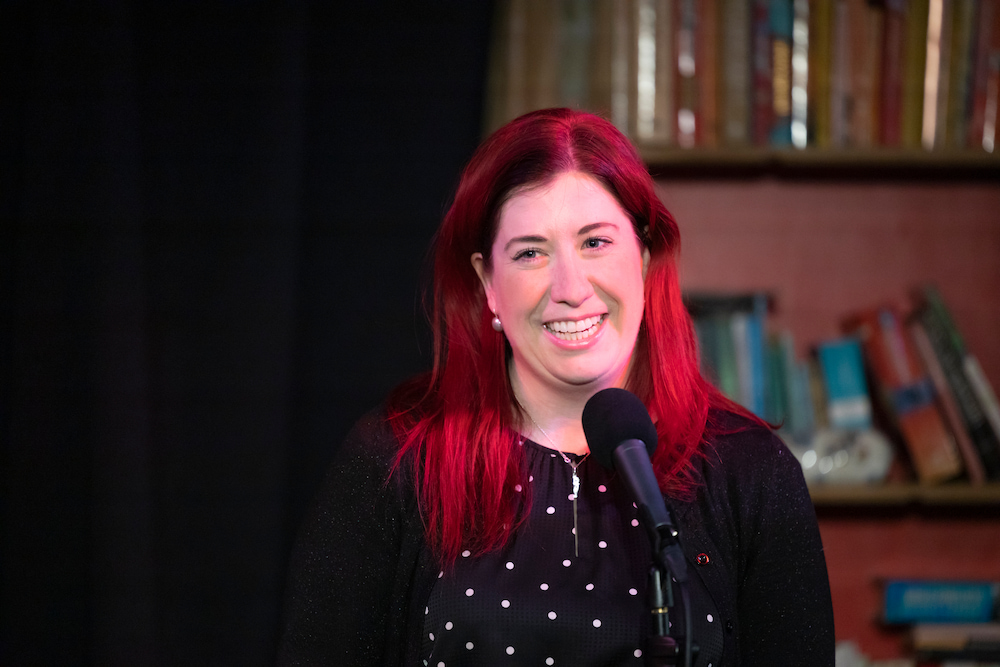The ACT’s arts strategy has had a successful first year, arts minister Tara Cheyne says: more funding for First Nations artists, an inaugural festival, and new policy for fun after-dark events.
“Our ambition is for Canberra to be Australia’s arts capital, and during the first 12 months, we have seen some amazing collaborative projects and innovative activities taking place across our city to help make this ambition a reality,” Ms Cheyne said.
“The policy and action plan are all about showing the world exactly what we have here in Canberra, what makes our city so special, and that what we have is unmissable.”
The arts strategy, Canberra: Australia’s Arts Capital – Arts, Culture and Creative Policy 2022-26, is designed to help the sector to grow, become more resilient, and support artists to have more sustainable careers.
Ms Cheyne said there had been significant progress against the action plan’s 82 actions, which include initiatives and targeted projects involving the arts portfolio, other government portfolios, and other strategic partners.
During 2023, the arts sector continued to recover from the COVID-19 pandemic. Audience numbers recovered; however, spending on events is yet to return to pre-pandemic levels.
Participation in cultural activities dropped during the ACT lockdowns of 2021, and attendance was lowest in November 2021 (only 23 per cent), an ACT Government spokesperson said. However, since then, around 8 in 10 ACT audience members reported attending at least one kind of cultural event in the fortnight before data was collected. Attendance rates reached their highest point since 2020 in October 2022 (81 per cent), then dropped to 78 per cent this August.
While as many Australians (68 per cent) attended events and festivals as in 2019 and 2022, they attend less often. Weekly attendance has dropped across all art forms; Australians choose only to attend every few months. August 2023 spending levels remain consistent with October 2022 levels, but ACT audiences spend less than the national average.
“Against this backdrop, the arts sector has shown its flexibility, determination, and strength to provide Canberrans with new theatre performances, art exhibitions, festivals, dance performances, music, books, and film,” Ms Cheyne said.
“The year saw work by Canberra’s diverse population reflected in First Nations’ cultural arts projects, and works by LGBTIQ+ and culturally and linguistically diverse artists.”
The Cultural Arts Program was established to provide Aboriginal and Torres Strait Islander artists with monetary support. It provided $127,565 for 11 arts activities, including cultural practice sessions incorporating language, dance, and art.
The Winter Innovation Festival Uncharted Territory took place for the first time in July: 10 days showcasing Canberra’s intersection between creativity and innovation, featuring local artists and performers alongside entrepreneurs, researchers, and scientists. There were workshops on play and urban design; a symposium on cybersecurity; family-friendly dance shows; dance performances; tabletop games; and jewellery making.
The Better Regulation Taskforce developed a draft vision and underpinning principles for Canberra’s night-time economy. This vision aims to support businesses including the arts, cultural, and creative sectors to contribute to lively and diverse night-time activity.
Ms Cheyne said that collaboration helped to drive creativity across many aspects of Canberra life – across artforms, sectors, and in government.
“I’m really pleased to see so much collaboration across the city when it comes to arts activities,” the minister said. “I recently announced the ACT Government’s world-first commission of symphonic arrangements for iconic rock band Hoodoo Gurus, who will headline Symphony in the Park 2024 with our very own Canberra Symphony Orchestra.
“We are seeing more collaboration between arts organisations and businesses, for example, the Belconnen Arts Centre has teamed up with Smith’s Alternative to create the Smith’s@Belco live-music series – a great way to bring the charm of Smith’s to a new location.
“At the end of 2022, Canberra Youth Theatre announced a three-year sponsorship with national law firm Holding Redlich to support its Emerging Playwright Commission, which offers a professional commission to an emerging Australian playwright to create a new full-length work that brings the voices and stories of youth to the stage.
“Canberra Glassworks and Megalo Print Studio have together curated Memphis Now, reflecting on the short-lived, rebellious movement in the 1980s that forever changed what functional design can be. It’s an exhibition that exemplifies the versatility and surprise of glass, and how printmaking can enhance it, and vice versa.”
Earlier this year, ArtsACT collaborated with VisitCanberra to organise workshops for Canberra arts and cultural organisations. The goal was to improve the cultural experience for visitors by fostering collaboration among organisations and enriching how stories are told and experiences developed.
A new After Dark Events Guide highlights Canberra’s gigs and performances at popular pubs and bars.
Plans for a new stadium; a redeveloped theatre centre; a new Convention Centre; and EPIC redeveloped are among the ACT Government’s projects in the Entertainment, Arts and Sports update to the 2019 ACT Infrastructure Plan, published in June. The government also worked on the Kingston Arts Precinct, and upgrades to the Tuggeranong Arts Centre and Gorman House Arts Centre.
“The arts strategy and action plan are intended to be living documents that can be reviewed periodically to respond to new or urgent needs of the sector,” Ms Cheyne said. “I look forward to working with the sector to identify new opportunities and priorities under the policy.”
The Action Plan – Key Highlights from Year One can be viewed here.



